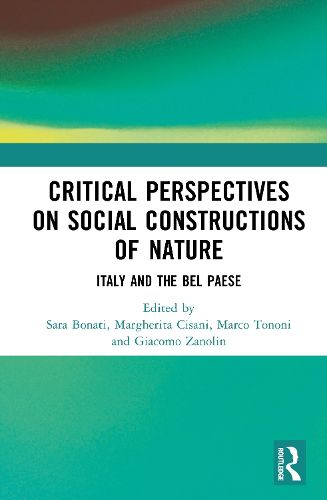Readings Newsletter
Become a Readings Member to make your shopping experience even easier.
Sign in or sign up for free!
You’re not far away from qualifying for FREE standard shipping within Australia
You’ve qualified for FREE standard shipping within Australia
The cart is loading…






This book explores the commodification of nature with a particular emphasis on how this process is perpetrated by capitalist societies.
Through the example of Italy, the book presents another lens to observe landscapes and natures and the different actors, both human and non-human, involved in their production. It draws on critical geography perspectives to unveil the socionatural dynamics that form the basis of the commodification of Italian natures. It examines how the social construction of nature in Italy produces peculiar effects on ecologies, landscapes as well as on human and non-human bodies, and how alternative socionatures emerge.
The book is written primarily for scholars, particularly in human, cultural and critical geography, political ecology, cultural studies as well as heritage, tourism, sustainability and urban studies. It will also be of interest to policymakers and planners in nature conservation, landscape planning and heritage management.
$9.00 standard shipping within Australia
FREE standard shipping within Australia for orders over $100.00
Express & International shipping calculated at checkout
This book explores the commodification of nature with a particular emphasis on how this process is perpetrated by capitalist societies.
Through the example of Italy, the book presents another lens to observe landscapes and natures and the different actors, both human and non-human, involved in their production. It draws on critical geography perspectives to unveil the socionatural dynamics that form the basis of the commodification of Italian natures. It examines how the social construction of nature in Italy produces peculiar effects on ecologies, landscapes as well as on human and non-human bodies, and how alternative socionatures emerge.
The book is written primarily for scholars, particularly in human, cultural and critical geography, political ecology, cultural studies as well as heritage, tourism, sustainability and urban studies. It will also be of interest to policymakers and planners in nature conservation, landscape planning and heritage management.